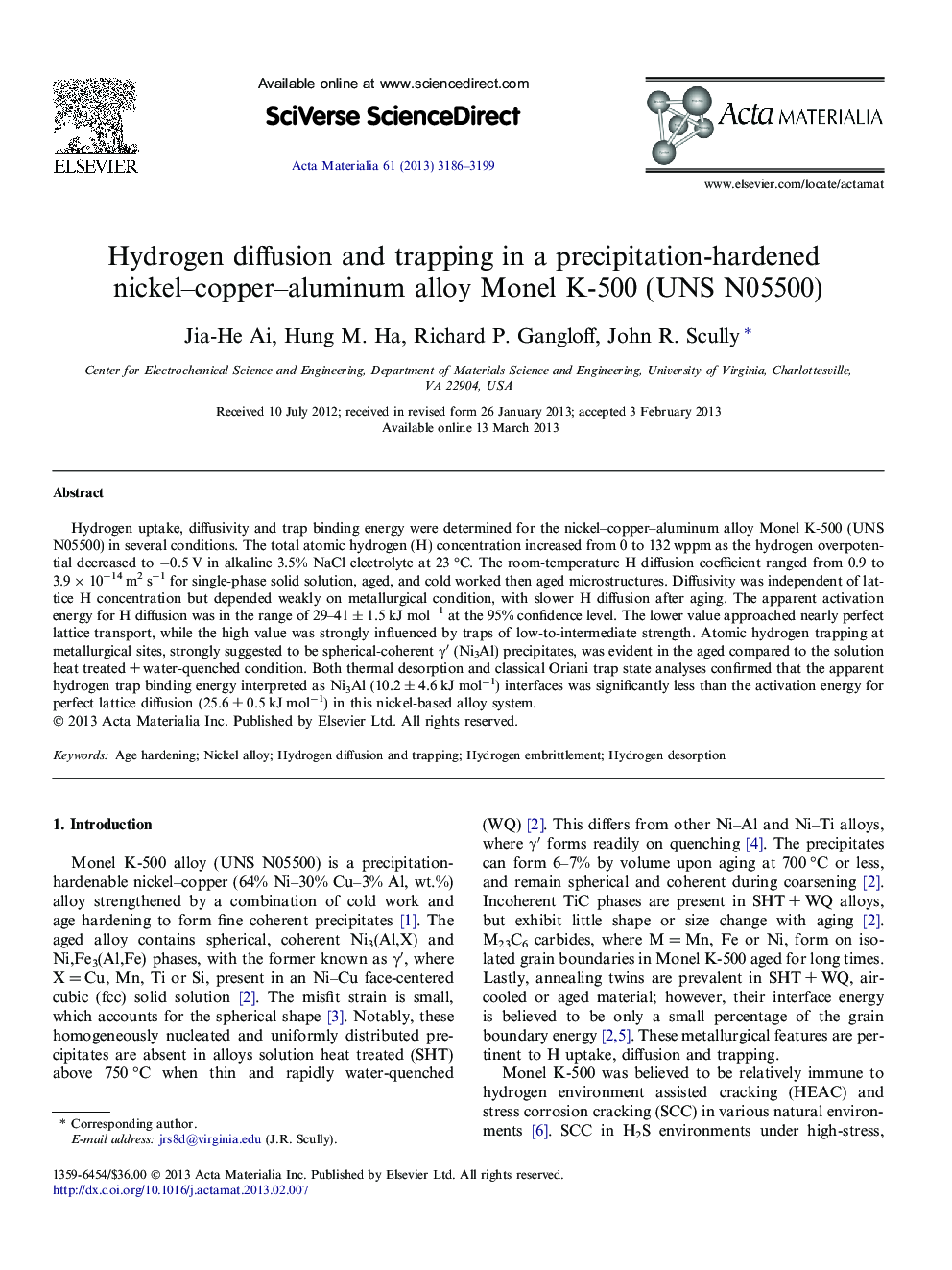| Article ID | Journal | Published Year | Pages | File Type |
|---|---|---|---|---|
| 1446379 | Acta Materialia | 2013 | 14 Pages |
Hydrogen uptake, diffusivity and trap binding energy were determined for the nickel–copper–aluminum alloy Monel K-500 (UNS N05500) in several conditions. The total atomic hydrogen (H) concentration increased from 0 to 132 wppm as the hydrogen overpotential decreased to −0.5 V in alkaline 3.5% NaCl electrolyte at 23 °C. The room-temperature H diffusion coefficient ranged from 0.9 to 3.9 × 10−14 m2 s−1 for single-phase solid solution, aged, and cold worked then aged microstructures. Diffusivity was independent of lattice H concentration but depended weakly on metallurgical condition, with slower H diffusion after aging. The apparent activation energy for H diffusion was in the range of 29–41 ± 1.5 kJ mol−1 at the 95% confidence level. The lower value approached nearly perfect lattice transport, while the high value was strongly influenced by traps of low-to-intermediate strength. Atomic hydrogen trapping at metallurgical sites, strongly suggested to be spherical-coherent γ′ (Ni3Al) precipitates, was evident in the aged compared to the solution heat treated + water-quenched condition. Both thermal desorption and classical Oriani trap state analyses confirmed that the apparent hydrogen trap binding energy interpreted as Ni3Al (10.2 ± 4.6 kJ mol−1) interfaces was significantly less than the activation energy for perfect lattice diffusion (25.6 ± 0.5 kJ mol−1) in this nickel-based alloy system.
